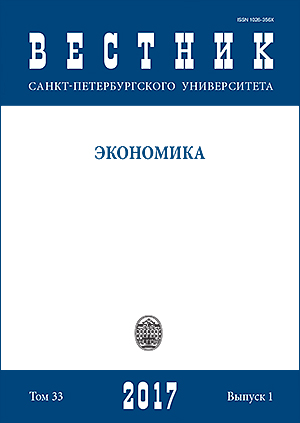Measurement of Liquidity Risk of Credit Institutions on the Example of Russian Banking System
DOI:
https://doi.org/10.21638/11701/spbu05.2017.105Abstract
The lack of liquidity in the banking sector was a key factor in the deployment of the latest financial cri- sis, but at the moment the authors do not know indicators to measure the liquidity risk for the banking system as a whole. In this paper, we propose an indicator that allows you to measure the adequacy of liquidity. Its construction is based on the separation of accounts, bank balance for liquid and illiquid based on a comparison of statistics intermonth flows and stocks at the end of the month. We show that for the Russian banking system this indicator will display the instability of the system, associated with a lack of liquidity, as well as a leading indicator for the banking crises of 2008 and 2014’s. The question of stability of distribution of the banks on this indicator during the crisis in the Russian economy is researched. Also in the work it is shown that the change in the time horizon in the calculation of the liquidity of the proposed definition of the indicator is a measure not only of the current liquidity risk, but the risk of instant liquidity and quality of funding.
Keywords:
Russia’s banking system, assets, liabilities, turnover ratio, duration, banking system crisis
Downloads
References
References in Latin Alphabet
Translation of references in Russian into English
Downloads
Published
How to Cite
Issue
Section
License
Articles of the St Petersburg University Journal of Economic Studies are open access distributed under the terms of the License Agreement with Saint Petersburg State University, which permits to the authors unrestricted distribution and self-archiving free of charge.






